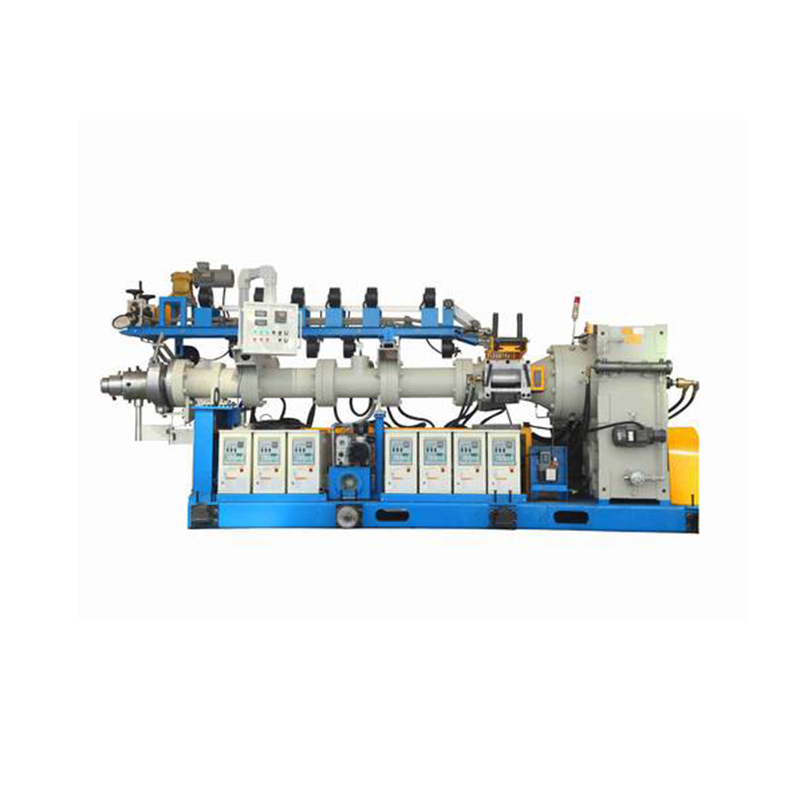Key Development Points in the Advancement of Rubber Extruders
The screw is the core component of the rubber extruder, responsible for conveying, compressing, mixing, and homogenizing the rubber compound. Improvements in screw design directly affect product quality, output capacity, and energy consumption.

Modern rubber extruders often feature customized screw geometries tailored to the type of rubber being processed. For instance, certain rubber compounds require gentle mixing to preserve additives, while others need high shear for uniform dispersion. Twin-screw and pin-barrel configurations have also been adopted for specialized applications, allowing better control of compound temperature and flow characteristics.
Adjustments in pitch, flight depth, and compression ratio have led to greater flexibility in processing different rubber formulations, resulting in higher extrusion quality and reduced material waste.
Rubber extrusion is a thermally sensitive process. Consistent and accurate temperature control is crucial to maintaining compound properties and avoiding premature curing (scorching) inside the extruder barrel.
Recent developments include the integration of advanced heating systems and multiple-zone temperature regulation. These allow for better thermal balance along the barrel, enabling operators to fine-tune settings for different sections of the screw.
Additionally, modern extruders are equipped with real-time pressure monitoring systems. These tools help maintain steady extrusion conditions, reduce the risk of compound degradation, and ensure dimensional accuracy of the final product.
With the rising demand for precision and repeatability in production, automation has become an essential feature of modern rubber extruders. Digital control systems using programmable logic controllers (PLCs) and human-machine interfaces (HMIs) offer simplified operation, better monitoring, and faster recipe switching.
These smart systems not only manage temperature, speed, and pressure settings, but also enable process data logging and diagnostics. The ability to track and analyze production data supports continuous improvement initiatives and simplifies troubleshooting.
Remote monitoring and control functions, when available, further enhance operational flexibility, especially in large-scale manufacturing environments.
As the rubber industry adopts a wider range of synthetic rubbers and eco-friendly compounds, extruders must be compatible with diverse material types. This requires improvements in wear resistance, corrosion protection, and compound adaptability.
High-performance steel alloys and surface treatments such as nitriding and chrome plating have been adopted to extend the life of screw and barrel components. In addition, extruders now come with features that allow quick cleaning and compound changeover, helping reduce downtime between production batches.
Such enhancements enable manufacturers to respond quickly to varying customer needs while maintaining consistent quality.
Efficiency has become a key consideration in the design of new rubber extruders. Manufacturers now prioritize machines that consume less power while maintaining or increasing output capacity. Innovations such as variable frequency drives (VFDs), servo motors, and optimized heating systems contribute to reduced energy usage.
Furthermore, reduced scrap generation through improved control systems and tighter tolerances supports environmental goals. Some extruders are designed to work with recycled rubber materials or bio-based compounds, reflecting the industry's gradual shift toward more sustainable practices.
The performance of a rubber extruder is closely tied to its ability to interface seamlessly with downstream equipment such as cooling conveyors, cutting systems, and vulcanization units. Recent developments focus on achieving smooth integration with other components of the production line.
Synchronized controls between the extruder and downstream units improve product consistency and reduce manual intervention. This integration enhances overall workflow efficiency and supports continuous, high-volume production with minimal disruption.






 English
English 中文简体
中文简体 русский
русский



